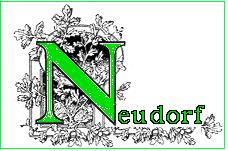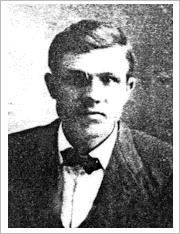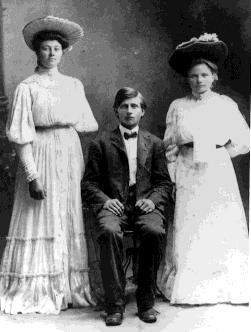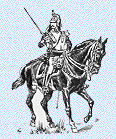Hoffer Family Page 11

A German-Russian Colony / Odessa S. Russia
Dates and Events
[Neudorf dates in red]:
-
1763 -
- 22 July: Catherine II "the Great" issued and invitation through a Manifesto which invited people to migrate to Russia which began a huge number of Germans to migrate from 1763 to the 1800s
-
1801 to 1825
- Alexander I [House of Romanov] reign as Tsar of Russia began
-
1803 -
- Duke Richelieu is appointed governor of Odessa Province
- Arrival of 2,990 German immigrants arrived
-
1804 -
-
20 Feb : Tsar Alexander I issued his call for new colonists to settle
the new territories near the Black Sea
-
Decree Promised the following additons to Catherine II's Manifesto of
1763:
- each family would be given thirty or sixty hectars of land
-
Decree Promised the following additons to Catherine II's Manifesto of
1763:
-
20 Feb : Tsar Alexander I issued his call for new colonists to settle
the new territories near the Black Sea
-
1806 to 1812 -
- Russia at War with Turkey
-
1807 to 1809 -
- War of Collation against France
-
1808 to 1809
-
- The first small group of Germans who migr. from
Germany arrived and were housed in Liebental until the spring of 1809
when they were guided to the area which would become known as Neudorf,
a German-Russian Colony in the Province of Odessa, S.
Russia
- the land incorporated 3 deserted chutors [not named] which had three wells, 1 dessiatine tract ( three acres) of vineyards which was kept had harvested through the following years
-
- The first small group of Germans who migr. from
Germany arrived and were housed in Liebental until the spring of 1809
when they were guided to the area which would become known as Neudorf,
a German-Russian Colony in the Province of Odessa, S.
Russia
-
1809 -
- Spring of 1809
- Councilor von Rosenkampf "supervised" the establishment of Neudorf
- Each family received 91,424 rubles from the Russian Royal Crown and with the money was provided seeds. Unfortuately, most of the colonists were not farms and lack the knowledge of how to toil the soil and raise animals.
-
Neudorf a German-Russian Colony /Village was founded
and would be a part of the German-Russian community known as
Glueckstalers
-
located in the Karamanova Valley and held the following
borders:
- north was Rehmanovka estate and Bergdorf colony which was next to the Dniester river valley
- touched the Parkanovka estate on the northeast
- estates of Thomanov and Shippki to the south
- west was the colony of Glueckstal colony
-
held 5,810 dessiatine of land
- hills, mounds, valleys, a few level tracts
- The eastern half of the properties of the village had rich black humus soil.
- The western half had black humorous soil mixed with sand which was good for winter rye, winter wheat, lentils, barley, maiz and potatoes
- Had 500 dessiatines of wooded valleys [oak, ash, linden, apple, pear]
- 100 houses for each family of colonists were built of stamped earth in the early years and exchanged for stones supplied from the quarry near the Dniester River, which was about 8 miles in distance; added later were stone walls, with avenue of trees
- Councillor Rosenkampf named the colony Neudorf
-
The first 100 families
- 259 males and 231 females
- 28 families from Wuerttemberg
- 37 families from Alsace
- 7 families from Palatinate (Pfalz)
- 11 families from Baden
- 2 families from Saxony
- 3 families from Prussia
- 11 families from Hungary [Austria-Hungary, now Rumania]
- 1 family from Warsaw
-
The other German-Russian colonies in the Glueckstal group were:
- Bergdor
- Glueckstal
- Neudorf
- Kassel
-
located in the Karamanova Valley and held the following
borders:
-
1812 -
- Russia's conquest in Bessarabia
- Napoleon invades Russia
- Plague in Odessa kills 2,656 people
-
1813 -
- failed crops
- Only the seed could be harvested from the first crop
-
1814 -
- Duke Richelieu returns to Paris where he becomes part of the new French government
- Count Langeron is appointed new governor of Odessa Province
- 8 more families migrated to Neudorf from Prussia
- failed crops
- school house was built by the community who, also, purcased two bells
-
1815 -
- 3 families from Galicia and some families left and migr. to Grusinia and Bessarabia
- the village of Neudorf the population had increased to 657 males and 589 females
- no report on this year's crop
-
1815 to 1819 -
- schoolmaster was hired but attendance was not required and therefore was irregular to about 1819 when attendance became more regular
-
1816
- Adam Wahl was mayor and noted as have migr. from Rittershofen Alsace Two men who were mayors, dates not known were Karl Schheppe and Jakob Job.
-
1816 to 1821
- Crops were good
-
1818 - 1845
- General Inzow was the President of the Welfare Committee
-
1819 -
- Stephan Weiss took office as mayor
-
1822 -
- failed crops, only the seeds were harvested
-
1823 -
- locusts caused damage to the grain fields and meadows
-
1823 to 1827
- Grasshoppers Plagued the areas
-
1825 -
- Tsar Alex. I visits south Russia and dies while touring the Crimea
- Nicholas I, brother of Alexander I, begins is reign as Tsar of Russia
- Decembrists Revolt fails and leaders are arrested. The Majority were sent to Siberia and exile which meant those who owned land in S. Russia was sold or changed ownership within the families
- Mayor Michael Bollinger encouraged the building of a church and new school house since the old one could no longer whole all the children
-
1825
- Mayor Michael Bollinger lead the way for the building of a Envangelical Lutheran Church that cost 15,000 rubles.
-
1828 -
- 1,400 head of cattle died of disease or had to be destroyed because of the disease
-
1828 to 1829
- Russia is at War with Turkey
-
1829 -
- Hailstorm destroyed all ("major damage") crops and trees were also damaged
-
1830 -
- Polish Revolt
- Church building was completed
-
1831 - 1832
- Epidemic of smallpox
-
1831 -
- Twelve died of cholera
-
1833 -
- "Black Year" [no rain, no crops, famine and food relief]
- Welfare Committee advanced seed and subsistence money to the improvished in the colony
-
1835 -
- Affairs of the colonies came under the Ministry of Imperial Domains
- Failed crops and just the seeds were harvested
-
1834 -
- Epidemic of smallpox
-
1837 -
- Epidemic of measles
- A community granery was built
- A good crop was reported
-
1838
- A good crop was reported
-
1840 -
- The newly elected Mayor Johann Schauer started the campaign of raising funds for a new school house which continued for two years; Councillor Michael von Hahn gave 300 rubles for the project
-
1841 -
- The seed planted was doubled and crops became productive
-
1842 -
- Central schools were established in Russia
- New school house was built with funds raised under Mayor Johann Schauer and the old school was remolded
- Schauer's new project was to raise funds for improving the church plus establishing the avenue of trees leading to the church and adding a stone wall around the church yard..
-
1843 -
- Invasion of mice; someone added up the known killed mice of 10,120
- Measles reported
-
1844 -
- 400 head of cattle died or were destroyed because of disease
- Welfare Committee, again, advanced see and subsistence money to the impoverish in the colony
- Epidemic of smallpox
-
1845 -
- Double the seed was harvested
- Many sheep were destroyed or died from epidemic of disease
-
1845 - 1846
- 916 sheep destroyed or died from disease epidemic
-
1845 - 1848
- Michael von Hahn, Staatsrat , became President of the Welfare Committe
-
1846 -
- Measles reported
- "Neural" fever took lives of young and old people
-
1847 -
- Drought which resulted in deaths of 675 livestock plus the lost of 3,000 rubles paid out for grain and another 1,000 for other cost
-
1848 -
- 25 April - frost killed all the fruit trees and vines were damaged; damaged was estimated as 3,000 to 4,000 rubles
-
1848 - 1853
- Baron von Rosen became Presidents of the Welfare Committe
- April 25 Sever frost damaged all fruit trees and vines. Loss of 3,000 to 4,000 rubles to the community
- The colonist reported they owned 5,810 dessiatines, which equals about 15,687 acres.
- Also reported: there were 208 families with a total of 1,246 persons
-
1853 - 1856
- Crimean War
- Baron von Mestmacher became President of the Welfare Committee
-
1855
- Nicholas I dies
- Alexander II's reign as Tsar begins
-
1856 - 1858
- Islawin became President of the Welfare Committee
-
1856 - 1866
- Alexander von Hamm became President of the Welfare Committee
-
1861 -
- Alexander II signs the Liberation of Serfs and the Land Distribution Act
- Because there were villagers who were not Evangelical Lutherans, the followers of the Reform Church gained the Royal Crown 's approval for their Reformed Parish on 4 Jan 1861
-
1863 -
- Corporal punishment of boys and girls prohibited in school
- The foundation of their Reform Church / school was laid in the spring of 1863
-
1864 -
- Reform Church/ School was completed before 18 Oct. 1864 when their first prayer meeting was held on the second level.
- Zemstvo [self government body] is established
-
1865 -
- Corporal punishment of women abolished
-
1866
- The village church (the old Evangelical Lutheran Church) was enlared and a massive tower and slender steeple was added. It could seat 500
- There would be constant strife between the two religious fractions and many impasses of the spending of the communal funds occured.
-
1867 - 1871
-
Vladimir von Oettinger became President of the Welfare
Committee
- There was an Oettinger family in Neudorf but not known at this time if they were relations
-
Vladimir von Oettinger became President of the Welfare
Committee
-
1872 -
- First group of German colonists migrate to USA
-
1874 -
- Army Services became required in the German-Russian communities and the exemption given to them by Catherine II "The Great" was no longer valid
-
1877 -
- Welfare Committee abolished
-
1880 -
- abolition of salt tax occurred
-
1881 -
- Tsar Alexander II is killed by a revolutionary's bomb
- Alexander III, son of Alex. II, begins reign as Tsar of Russia, who begins to Russianize Russia which effects the German-Russians
- Ministry of Public Enlightenment is given the charge of German-Russian schools
-
1892 -
- Famine strikes most of Russia
-
1893
- German-Russian and all villages holding foreign names were given Russian names
-
1894 -
- Tsar Alexander III dies
- Nicholas II, son of Alexander II, begins his reign as Tsar of Russia
-
1898
- Frederick Hoffer, the elder, owned a large farm outside of Neudorf, according to records, and his elder son, Frederick, sold the property after his father died and left with his younger brothers for the USA in 1898 with the Shauer family and settled for a time in Tripp, ND and later settled in the Tappen and Streeter area. Their mother Johanna, nee Rott, Hoffer remarried Georg Dockter and they would migr. to the USA a few years later..
-
 Frederick Hoffer
b. 1878
Neudorf/ Od. S. Russia and the photos below are his
siblings.
Frederick Hoffer
b. 1878
Neudorf/ Od. S. Russia and the photos below are his
siblings.
-

-
L to R: Christina Hoffer [b. 1888], Jacob Hoffer [b. 1883] and Rosina b. 1876] Hoffer
-
By 1903 .
- Tthe village had and Evangelical Lutheran and a Reformed Church schools that instructed 365 students
- The village had a co-op store, two stores that were privately owned, a beer hall, three dairies, three oil presses (flax and sunfloers), flour mills run on steam, and, a cement tile factory.
-
1904 to 1905
- Russo-Japanese War
-
1905 -
- 22 Jan. - Bloody Sunday
- 30 Oct - October Manifesto: Gave Russians a constitution, a future Duma, and civil liberties were guaranteed
- 22 Dec. - Uprising of the workers in Moscow
-
1906 -
- 10 May: Meeting of the First Duma
-
1912 to 1913 -
- Balkan Wars
-
1914 - 1918
- 1 Aug Germany declares War On Russia: The Great War [known later as WW I] began
-
1915
-
By 1915 most houses had been made of stone which held
the family in one part and the horse and/or cow barn in the other part.
Buildings and fences for pigs, chickens and other animals were located
in the "back yard" of the main building. There were stone fences/
walls along the street in front of the house. Some houses had "summer
kitchens"... The roofs were made of reeds, tile or metal. There
were no sidewalks. Furniture was made locally... There wee musical
instruments such as violins, zithers, reed organ and accordians. A
few horns.
-
There were 10 Hofer and 6 Hoffer houses .
- Jakob Hoffer lot #132
- Ludwig Hoffer lot #131
- K. [Katharina?] Hoffer lot #103
- Ludwig Hoffer lot #157
- K. Hoffer lot #216
- J. [Jakob?] Hoffer #142
-
Numbers of Handicrafters, who were also farmers were listed:
- 3 blacksmiths
- 5 carpenters
- 4 wagon bilders
- 5 shoemakers
- 1 tailor
- 1 baker
-
Animals listed:
- 1,154 horses
- 1,191 cows
- 564 poultrly
- 362 sheep
- 820 pigs
-
There were 10 Hofer and 6 Hoffer houses .
-
By 1915 most houses had been made of stone which held
the family in one part and the horse and/or cow barn in the other part.
Buildings and fences for pigs, chickens and other animals were located
in the "back yard" of the main building. There were stone fences/
walls along the street in front of the house. Some houses had "summer
kitchens"... The roofs were made of reeds, tile or metal. There
were no sidewalks. Furniture was made locally... There wee musical
instruments such as violins, zithers, reed organ and accordians. A
few horns.
-
1917 -
- 12 Mar : Provisional Government meets
- 15 Mar: Nicholas II abdicated for himself and son and expresses his favor toward his brother Michael plus the continuation of the Provisional Government
- 16 April : Lenin returns to Russia to lead the Bolsheviks
- 16 - 18 July: First attempt of the Bolshviks to seize power
- 6 Nov [24 Oct OS]: Russian Bolshvik revolution began...
- Royal Family taken into custody of the Bolsheviks
- Conflict between Red Army and White Army began
-
1918 -
- Reported that ex-Tsar Nicholas II is assassinated and his family had been taken to a safe place
- Reported that the uncrown Tsar Michael is assassinated
- Conclusion of Peace with the Central Powers with Germany's defeat
- Russia become known as the U.S.R.R. and the Bolsheviks began to call themselves "communists"
-
1918 to 1920/21 -
- Great Civil War
-
1920 -
- 116,539 German-Russians were reported to have left Russia for the USA
-
1921 to 1922 -
- The Great Famine: some 250,000 German-Russians are reported to have starved to death
-
1924 -
- 21 Jan: Death of Lenin
- Stalin "the Bloody" rises into power
-
1928 to 1929 -
- Stalin's Policy on Collectivization began
- Stalin's elimination of "kulacks" began
- Huge waves of people, including an unknown number of German-Russians, sent to Siberia to concentrations camps where millions perished
-
1932 to 33 -
- Second Great Russian famine occurred
-
1941 -
-
22 June: Germany invaded the U.S.S.R.
- 16 Oct 1941 - Germans invaded Odessa
-
22 June: Germany invaded the U.S.S.R.
-
1944 -
- 250,000 German-Russian are carried off to Siberia while more than 80,000 escape to Germany, England, China, Canada, and other places around the world
-
1945 -
-
Population In Neudorf:
- Number of people: 2,262
- Number of families: 490
- Number of children without fathers: 115
- Number of people deported from Neudorf: 277
- Number of people killed: 5
- Number of people who starved to death: 22
-
Population In Neudorf:
-
1964
- Kruschev gives amnesty to the German-Russians
Neudorf Information On Internet
Glueckstal / Odessa S. Russia
Under Construction
Glueckstal Village: http://www.glueckstal.org
(1) Joseph S. Heights HOMESTEADERS ON THE STEPPE, Odyssey of a Pioneering People pps. 193-196
(2) KARL STUMPP, The Emigration from Germany to Russia in theYears 1763 to 1860
(3) THE GERMAN-RUSSIAN by Karl Stumpp
(4) THE CZAR'S GERMANS by Hattie Plum Williams [Volga Germans' story]
(5) from CATHERINE to KHRUSHCHEV, The Story of Russia's Germans by Adam Giesinger [Volga]
(6) THE BLACK SEA GERMANS IN THE DAKOTS BY GEORG REATH
(7) AN ENCYCLOPEIDA OF WORLD HISTORY, Edited by Langer
-----------BOOK STORES WHICH SELL THE BOOKS MENTION ABOVE:
AHSGR Book Store: http://www.ahsgr.org/books.htm
GRHS Book Store: http://www.grhs.com/publications.htm
NDU
- GRHC [German from Russia Heritage Collection] : http://www.lib.ndsu.nodak.edu/gerrus/
or
See Remmick-Hubert's :Library Index Page for other books used for these web sites




